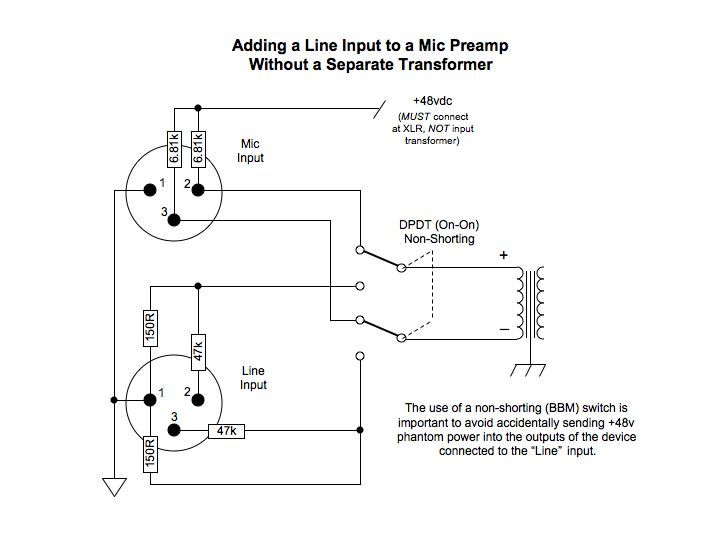|
|
Post by rascalaudio on Jun 6, 2014 17:12:19 GMT -6
For people who are building/racking mic preamps and want to add a line input to them here is a simple way.  This provides you with a input that any modern or vintage line level device can be comfortable driving, cuts the level -50dB and provides a source output that looks like a microphone signal to your preamp. Use a non-shorting (BBM) switch, so any phantom power you have on your mic input connector will never reach your line input connector. You can also use this resistor network with XLR barrel connectors to make pads that you can take for use with any mic preamp for tracking or mixing. Any time you want to put some preamp love on line level signal that could benefit from it. Enjoy, Joel |
|
|
|
Post by wiz on Jun 6, 2014 17:31:58 GMT -6
awesome
cheers
Wiz
|
|
|
|
Post by svart on Jun 6, 2014 23:39:42 GMT -6
Probably works ok with manual switch, but if that was a really fast relay, I'd start to worry about the flyback you might get from a charged inductor switching into a load through a switch.. when that gets fast enough we call it a switching power supply..
|
|
|
|
Post by jimwilliams on Jun 7, 2014 11:27:59 GMT -6
A 50 db pad is rather severe. You would need the mic pre to take +50 db of gain to reach unity, with 50 db of noise added.
Most mic pads use a smaller series resistor, about 4.7k. Then pick the shunt resistor to taste to achieve the attenuation desired. Use a pot and it's variable. Tap in on the other side of the transformer and you skip the iron colors and up to 20 more db of gain you won't need.
|
|
|
|
Post by rascalaudio on Jun 7, 2014 17:08:26 GMT -6
This is only meant for line inputs to mic level output. Yes, -50dB for a mic pad is extremely severe. Not recommended for that.
|
|
Deleted
Deleted Member
Posts: 0
|
Post by Deleted on Jun 8, 2014 4:01:54 GMT -6
I think jimwilliams wanted to point out, that at a volume decrease of 50dB, the resistor noise is not optimal, if you just go with a simple series resistor. You are better off with a shunt volume control like e.g. shown on this page, fig.7 and following: www.raleighaudio.com/volume_control.htm |
|
|
|
Post by rascalaudio on Jun 8, 2014 8:34:04 GMT -6
Very cool, thanks.
|
|